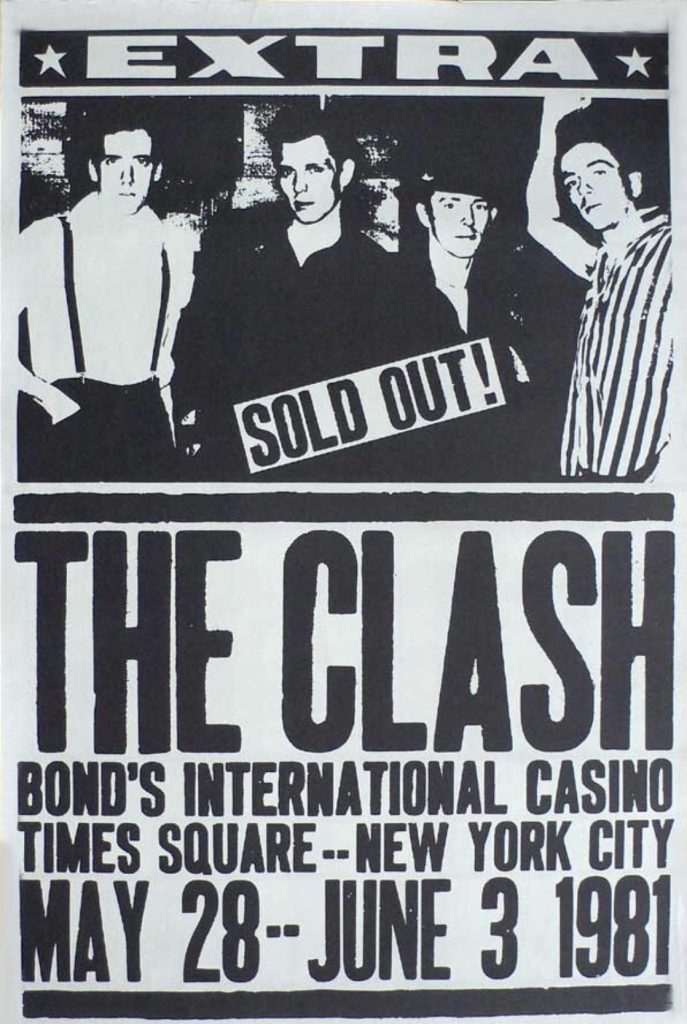This is Radio Clash
On November 20, 1981, The Clash’s genre-defying record ‘This Is Radio Clash’ was released. The band’s last stand-alone single, it presaged not only the direction the band would go in years to come, but also the direction of much of popular music in the decades which followed.

This is Radio Clash built upon The Clash’s punk roots, adding elements of hip-hop, what would later be called “electronica,” and various Caribbean musical styles including Jamaican toasting to create a sound unlike anything heard before. Released as both a 7-inch single and 12-inch with three additional remixed versions, the song was in some ways classic Clash — overtly political, defiant, raw — and in other ways a radical departure for the band, which was increasingly influenced by the new sounds they were hearing in New York City. In addition to hip-hop, that included electro, funk, and breakbeat.

A key element in that mix was a young New York-bred producer, mixer, and sound engineer named Joe Blaney. Blaney began working as a technician at Greenwich Village’s Electric Lady Studios on West 8th Street in 1979, and his first job mixing and engineering a recording was The Clash’s ‘This is Radio Clash.’ The Band worked with Blaney on the mixing in July of 1981, following their legendary residency at Bond’s in Times Square, where their performances were oversold by promoters and to honor the demand for tickets The Clash doubled the number of shows they played. During their run they had different opening acts each night, including Grandmaster Flash and the Furious Five and Bad Brains, reflecting the expanding musical styles they were embracing.

It was at these shows and on the New York-based Tom Snyder TV show during that run that The Clash first performed ‘This Is Radio Clash.’ The controversial performances, which combined musical acts and audiences which at that time were rarely brought together, and were shut down by the police multiple times for overcrowding, propelled The Clash’s rising star in America, where they still lacked the popularity they had achieved in Europe.

The band wanted to capture that defiant energy and cross-pollination of musical styles which, to them, reflected the New York they encountered. Blaney and Electric Lady Studios did just that. While the song was only moderately successful as a single at the time, it has been hailed by critics in the years since as a revolutionary musical statement which combined powerful emerging threads in popular music which to that point had remained largely separate and distinct. Of course this mixing of styles like punk, hip-hop, electro and reggae was happening throughout the downtown club scene, and was manifesting in the recordings of other downtown acts like Blondie and the Tom Tom Club, and influencing fellow British acts like New Order.

So impressed were The Clash with Blaney’s work at Electric Lady Studios that they hired him and the studio to record and produce their next and final album with the full roster of the band, Combat Rock, in 1982. This album, The Clash’s most commercially successful, finally broke them with a broader American audience, and fully realized The Clash’s desire, so dramatically expressed on ‘This Is Radio Clash,’ to merge genres like punk and hip hop into a new, more durable musical alloy which continues to resonate and influence to this day.
Watch The Clash performing ‘This Is Radio Clash’ live at Bond’s in Times Square in 1981:

Joe Blaney has been my upstairs neighbor for, oh, the past 20 (or 30??) years. I know him as a good neighbor with a beautiful wife and two gorgeous, extremely tall children. Glad to hear he’s done well for himself! 😉